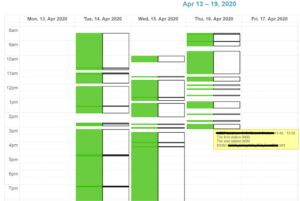As an active party in the world of InfraBIM in the BeNeLux, we often get the question: “what do you mean by BIM?” And that is quite a good question, because I often ask our customers. The abbreviation BIM has a number of different definitions and meanings. For example, I recently heard a few explanations for the abbreviation. I think Building Information Modeling and Building Information Management are the two we’ve all heard before.
 Tiny Nuiten, General Manager, Infrakit Belgium, Netherlands and Luxemburg
Tiny Nuiten, General Manager, Infrakit Belgium, Netherlands and Luxemburg
Still, during the InfraBIM Open conference in Tampere, Finland, I heard some new ones: ‘Bad Information Management’, ‘Better Information Management’ and ‘Best Information Management’. For us at Infrakit these are the definitions we are working on, every day.
Now it is not the case that nobody thinks about this, on the contrary, entire teams are even being set up to see how they can best deal with all that data. Because it is quite a lot, from design to implementation and back. We are not only talking about 3d design files, but also about documents, photos, as built data, logistics files, asset management, approval cycles, reports, machine control files, but also about the link with external platforms that use the data in their own way. In short, everyone has their own definition, modeling and structure.
As InfraBIM experts, our goal is always to turn BAD Information management into BEST Information management, and we cannot do this alone.
As InfraBIM experts, our goal is always to turn BAD Information management into BEST Information management, and we cannot do this alone. Although our products play a central role in the overall process, we are left empty-handed without the necessary good files supplied. So InfraBIM is not something that one party can complete on its own, not even Infrakit.
Close cooperation between all parties involved is therefore essential for the success of a “BEST information Management” system. As Infrakit we do not dare say otherwise, we constantly talk to all possible suppliers and buyers (with a beautiful word stakeholders) of certain information to be able to tell in real time what the latest situation is.
These links ensure that the entire information flow is available in the right place at the right time, in the right version. We like to call this a “tool chain”. A good ‘tool chain’ is a chain of applications that all apply their own expertise to the same data set and as befits a ‘chain’, which is as strong as the weakest link.
Look, that ‘tool chain’ is of course important, we all realize that, but more importantly are the people who now learn and think about it in their studies and at work. People who are going to form and set the direction in the near or distant future. Information flows in the (sometimes confusing) world of BIM in general and that of InfraBIM in particular.
That is why it is so important for us to contribute to education where we can, to facilitate, support, inform, but also to hear everyone’s input and implement it where possible. That is the task that we constantly keep in mind, and adapt to the changing circumstances, the new ideas, the new insights and ensure that students and people already working in infra construction continue to play that central role. Your input, now or in the future, is of great importance.
Because together with you, all BIM experts out there, we can change the definition of BIM, be it Modeling or Management, as long as we can turn ‘BAD’ into ‘BEST’.
Because together with you, all BIM experts out there, we can change the definition of BIM, be it Modeling or Management, as long as we can turn ‘BAD’ into ‘BEST’. Everyone involved will be much happier.


 Tiny Nuiten, General Manager, Infrakit Belgium, Netherlands and Luxemburg
Tiny Nuiten, General Manager, Infrakit Belgium, Netherlands and Luxemburg

Recent Comments